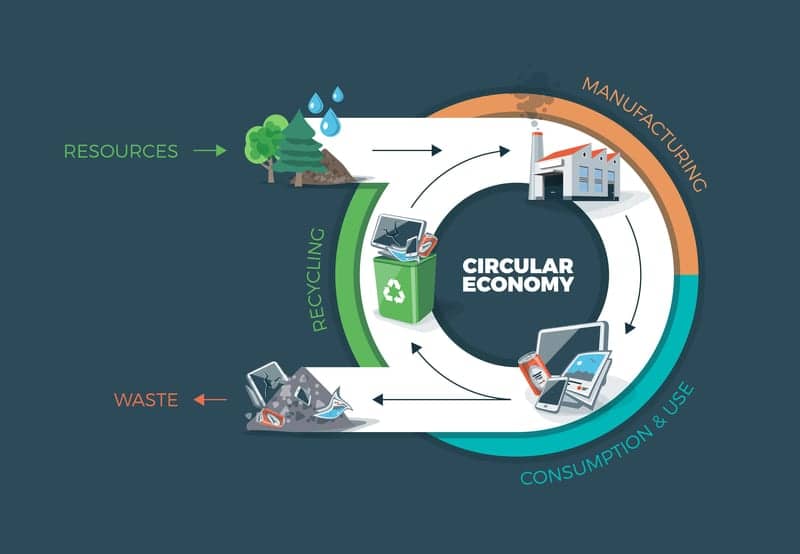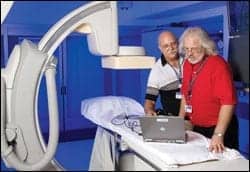By Matthew Lancaster, MHA
Understanding the value of an asset is critical to all businesses, especially within the healthcare technology management field. Wouldn’t it make HTM life so much easier if we could confidently standardize equipment lifecycle assessments and tie these relationships into capital planning decision-making?
HTM professionals should be informed advocates with their local C-suite regarding current and future clinical technology capital. Why? Good decision-making.The future viability of healthcare organizations and businesses requires that the financial impact of capital investments be fully recognized. Proper valuation informs investors and stakeholders aboutwhen to replace equipment, how much they should expect to pay for a device, when to upgrade, or when to sell—and HTM professionals have the best visibility into these needs.
Cost of Service Ratio
Although generally accepted accounting principles (GAAP) exist, determining value becomes dependent on the nature of the asset (what it is) and the intent of the organization (what we are planning on doing with it—for instance, repair, sell, salvage, trade in, etc.). Many measurements, such as cost of service ratio (COSR), might not correctly utilize or recognize depreciation of the medical devices within the healthcare organization (HCO) that HTM professionals are directly supporting. This is a major planning problem.
COSR is the relationship between how much it costs to maintain an asset compared to the cost of the asset. The formula is defined as the annual cost of maintenance divided by the original cost of the asset. The lower the COSR percentage, the better the asset is from a maintenance and cost efficiency standpoint. That is, until you include depreciation.
Case in Point
A $1.2 million MRI machine with an estimated annual cost of maintenance of $100,000 represents a COSR of 8.3%, until factoring in the age of the MRI. The issue (from a financial standpoint) is that the current methodology for COSR does not account for elapsed time that has already accrued, which depreciates the value of the MRI and provides critical information to HCO administration or CFOs. An MRI is only worth what an entity is willing to pay.
A common notion is that because depreciated value (DV) is a tax concept spreading the cost over a determined period, it should not be important. However, since capital equipment replacement plan (CERP) lists are developed by HTM professionals for HCO administration, depreciation is impactful because it is rooting this information in how far along that investment has progressed compared to expenses incurred from maintenance costs.
The calculation for determining DV can be expressed as: DV = (( I – ( I / E ) * A ))
Where depreciated value (DV) is equal to the initial cost (I) subtracted by the initial cost (I) divided by the life expectancy (E) of the equipment multiplied by the current age (A). For more accuracy, one might consider taking the difference of the depreciated value of the device by the current salvage value (what the asset is worth in the open market).
Key Implications
With a useful life expectancy of 12 years, the MRI COSR at 9 years of age would remain at 8.3%. This is not an accurate reflection of the relationship between maintenance expenses for an asset and what it is worth. Instead, COSR would be more accurately calculated (including a current salvage value of $150,000) thus:
- Annual Cost of Maintenance = $100,000
- Calculated DV = ((($1,200,000) – ($1,200,000 / 12) x 9) = $300,000
- Salvage Value = ($150,000
- 100,000
- 150,000 or 66.6% COSR (Highly Inefficient).
Consequently, the recommended COSR formula is defined as the annual cost of maintenance divided by the difference of the depreciated value and salvage value of the asset.
Financial Perspective Matters
The MRI scenario from a straight-line depreciation and capital planning standpoint has nearly paid for itself and is nearing the point where maintenance is going to exceed the remaining current value of the MRI. When devices exceed their useful life, going beyond the break-even point from a depreciable perspective (12 years, in this example) now requires generating revenues beyond the annual cost of maintenance, else the asset becomes “sunk cost” or a bad investment. This is often the reason that many HCOs replace high-end capital (CT, MRI)—because of the revenue streamline they provide.
These aged assets have correspondingly higher COSRs yet may be beneficial from a financial perspective if they are generating revenue beyond annual maintenance costs. However, they are at risk of service loss from a functionality stance as well as due to potential parts availability issues, lack of vendor support, and many other facets that increase annual costs of maintenance.
The Bottom Line
Financial responsibility in HTM can be complex. For one, it requires good information, ensuring that installation dates, device purchase costs, and historical maintenance data empower HTM professionals to bridge the financial health of the capital gap to HCO administration and CFOs. That’s why it’s good practice for HCOs to plan for and carry large amounts of long-term securities investments as cash flows (funded depreciation), which can eventually be reserved and used to purchase future capital.
After all, HCOs using dated clinical technologies or depreciated equipment assume higher risk and vulnerabilities in the continuum of care. Replacement recommendations should occur once proper COSR analysis has been performed and the annual maintenance cost of the asset exceeds its depreciated value.
Matthew Lancaster is serving as senior site manager—clinical engineering within TRIMEDX in Jacksonville, Fla. Questions and comments can be directed to 24×7 Magazine chief editor Keri Forsythe-Stephens at [email protected].






The rationales presented seem to be based on the “maintenance expenditure limit” (MEL) rule adopted by the Dept. of Army back in the 90’s and the “cost of service” (COSR) benchmark espoused by many CE/HTM professionals. Unfortunately, both are myths that do not stand up to scrutiny. Please see clarifications provided in chapters 37 and 40, respectively, of my book Fake News, True Facts and Legends in Clinical Engineering. If you don’t want to spend money to buy the book, you can read why COSR is not a good benchmark in the open-access article available at https://reliabilityweb.com/articles/entry/why-maintenance-cost-to-asset-value-ratio-is-not-a-good-benchmark.